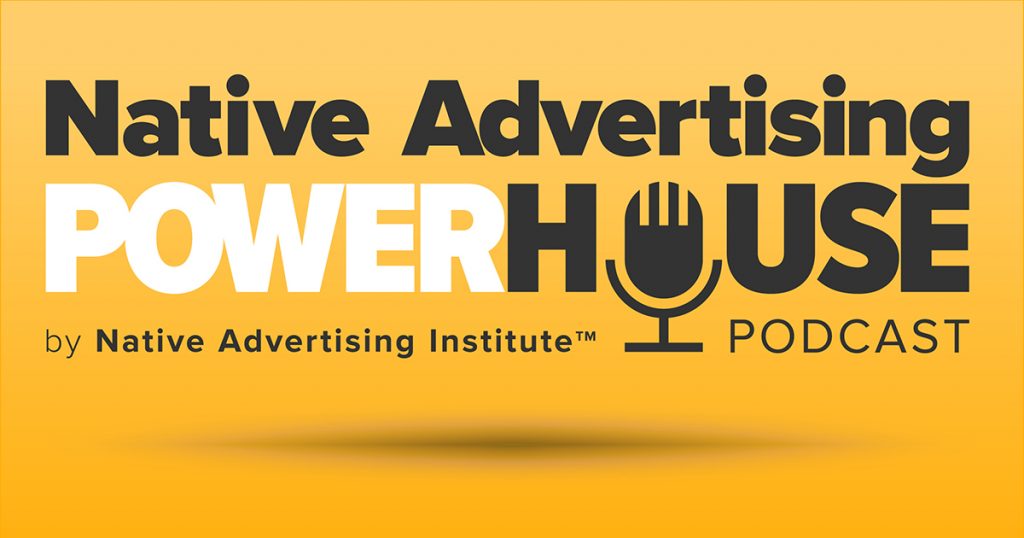
By Simone Krouwer
In consultation with the study's authors, Colin Campbell & Nathaniel J. Evans
PhD researcher at the communcations department
of University of Antwerp, Belgium
Connect
A new joint study from the University of Georgia and the University of San Diego suggests that combining native ads with banner ads could help readers to recognize native ads. Results of two experimental studies suggest that a companion banner ad is just as effective for increasing ad recognition as a text-based label. The studies also suggest that readers are appreciative of more transparent native advertising practices.
Sometimes the ads are not distinguishable from the editorial format, which calls for clear labelling.
Problems with disclosures
Over the past number of years, there has been a widespread adoption of native advertising in the news industry. By being less intrusive and by providing more editorial value, native ads have shown to increase engagement and interest among readers. Yet sometimes the ads are not distinguishable from the editorial format, which calls for clear labelling.
Even though organizations such as the Federal Trade Commission and the IAB have issued guidelines for uniform labelling of native ads, label practices still vary widely.
What’s more, past studies suggest that readers generally either do not understand the labels or sometimes even do not notice them. In order to avoid consumer confusion, additional cues (such as labels, or different colours) are needed.
As the consumer now connects the brand to advertising, it is more likely that any mentions of the brand in the native advertisement on the same page will also be linked to this concept.
Can a banner ad help?
In some cases, consumers can recognize native ads as commercial content not because they notice a disclosure, but because of other noticeable advertising cues (for example an unusually high brand presence in an article).
When a companion banner ad is included on a native advertisement’s page, the brand will become more salient and the probability increases that consumers will recognize the brand in the banner as an advertiser.
As the consumer now connects the brand to advertising, it is more likely that any mentions of the brand in the native advertisement on the same page will also be linked to this concept.
RELATED: How Brand Mentions Affect Reader Engagement With Sponsored Content
The researchers, dr. Campbell and dr. Evans, therefore hypothesized that the presence of a companion banner ad will lead to significantly higher native ad recognition among readers, compared to when a non-companion banner ad (provided by another advertiser) is present.
They also expected that the combination of a label (such as ‘sponsored by…’) with companion banner advertising would be more effective for increasing ad recognition, compared to solely using banner ads or labelling.
Lastly, they expect that the banner ad will have an even stronger positive effect on ad recognition when a brand is more familiar to readers.
Consumers generally do not want to be unwillingly influenced and this could result in more critical evaluations. Yet at the same time, consumers also value openness and honesty.
The importance of transparency
Some advertisers are still a bit fearful of clearly labelling native ads as advertising, as they think that doing so might decrease the advertisements’ effectiveness.
To some degree, it is true that ad recognition can lead to more critical processing of ads and more negative evaluations by readers. Consumers generally do not want to be unwillingly influenced and this could result in more critical evaluations. Yet at the same time, consumers also value openness and honesty.
RELATED: How to Strike the Right Balance Between Church and State
When a publisher and advertiser clearly communicate an advertisement’s persuasive nature, it is less likely that the reader will feel deceived.
Therefore, even though readers’ ad recognition may initially lead to more negative evaluations, the researchers expected that openly disclosing the commercial intent of the advertiser via banners and disclosures would also increase the perceived transparency of the ads. This transparency would then mitigate the negative effects of ad recognition.
In the first study, the researchers combined labelling with a companion banner ad and tested the impact on readers’ ad recognition.
The first study
In the first study, the researchers combined labelling with a companion banner ad and tested the impact on readers’ ad recognition, their evaluations of the brand/publisher, their intention to share the native ad and the new organization’s credibility. They randomly exposed 196 readers to one of four mockup native advertisements on the USA Today website.
The label (which included the phrase “sponsored by” and the advertiser’s logo) was either present or absent and the native ad included either a companion banner ad (from the same advertiser) or a noncompanion banner ad (featuring a different advertiser).
RELATED: Should We Have a Global Standard for Labelling Native Advertising
A pre-test showed that the companion and noncompanion banner ad did not differ in terms of perceived attractiveness, quality or persuasiveness.
The label was positioned halfway through the article, as past research suggests that this position increases disclosure recognition.
Combining a companion banner ad with a disclosure did not further increase the extent to which readers identified the native ad as advertising.
Results of study 1
Results showed that both companion banner advertisements and disclosures significantly increased the extent to which readers perceived the native ads to be advertising. Yet, combining a companion banner ad with a disclosure did not further increase the extent to which readers identified the native ad as advertising.
They were only effective when used separately. Results also suggested that ad recognition could decrease readers’ evaluations of the publisher, the organizational credibility and readers’ intention to share the article. However, these negative effects were mitigated – and sometimes even reversed – by an increase in perceived sponsorship transparency among readers.
Past research shows that consumers are more likely to recognize and remember familiar brands.
Is there a difference between familiar and non-familiar brands?
In the first study, the researchers did not control for brand familiarity. Past research shows that consumers are more likely to recognize and remember familiar brands.
RELATED: Small Changes in Disclosures Can Have a Big Impact on Ad Recognition
The researchers, therefore, performed a second study to further test whether a companion banner ad would be even more effective for familiar brands and whether this would have an effect on readers’ evaluations. A pre-test showed that the brands ‘Starbucks’ and ‘Kindle’ were significantly more familiar to readers compared to the fictitious brands ‘Grizzly’ and ‘Glance’.
During the second experiment, 197 readers were randomly exposed to a native ad with either a companion or a noncompanion banner ad, provided by either a more familiar or a less familiar advertiser.
This effect did not differ for more familiar or less familiar brands.
Results of study 2
The results again showed that a companion banner ad led to significantly higher ad recognition among readers. This effect did not differ for more familiar or less familiar brands.
The other results were in line with the first study: readers’ ad recognition initially led to more negative evaluations, but the negative effects diminished when consumers considered the native ad as transparent.
A native ad can maintain its editorial style and value, whilst a companion banner ad can include a more persuasive message or call to action.
Conclusion: A banner ad can reduce deception
As a banner ad seems just as effective as traditional labelling in terms of ad recognition among readers, for both more and less familiar brands, combining native with banner ads could be a novel means to increase ad recognition among readers.
Besides decreasing consumer confusion, additional banner advertising could possibly also increase readers’ brand memory. A native ad can maintain its editorial style and value, whilst a companion banner ad can include a more persuasive message or call to action.
The combination of banner ads with native advertising might also increase the CTR of the banner ads. These potential beneficial effects may justify any additional costs of including banner advertising.
It would be interesting to see publishers further test the effectiveness of companion banner ads in a non-experimental news environment.
Readers value transparent native advertising practices
Even though ad recognition initially leads to more negative evaluations by readers, these negative effects diminish and sometimes even reverse when readers perceive native ads as clearly identified.
The study illustrates the importance of transparency, as results indicate that readers are more accepting of transparent native advertising practices.
RELATED: "If We Don't Work Together, Native Advertising Will Suffer the Same Fate as Display Ads"
In order to implement native advertisements in a manner that’s both effective and sustainable, practitioners can pre-test the perceived transparency of different types of native advertisements.
It would be interesting to see publishers further test the effectiveness of companion banner ads in a non-experimental news environment, among different types of advertisers, banner formats and more overt/covert native advertisements.
Following the results of this study, the researchers encourage advertisers and publishers to further improve native advertisements’ transparency as well as experiment with companion banner advertising.
About the study:
The study, “The Role of a Companion Banner and Sponsorship Transparency in Recognizing and Evaluating Article-style Native Advertising” has been published in the Journal of Interactive Marketing.

